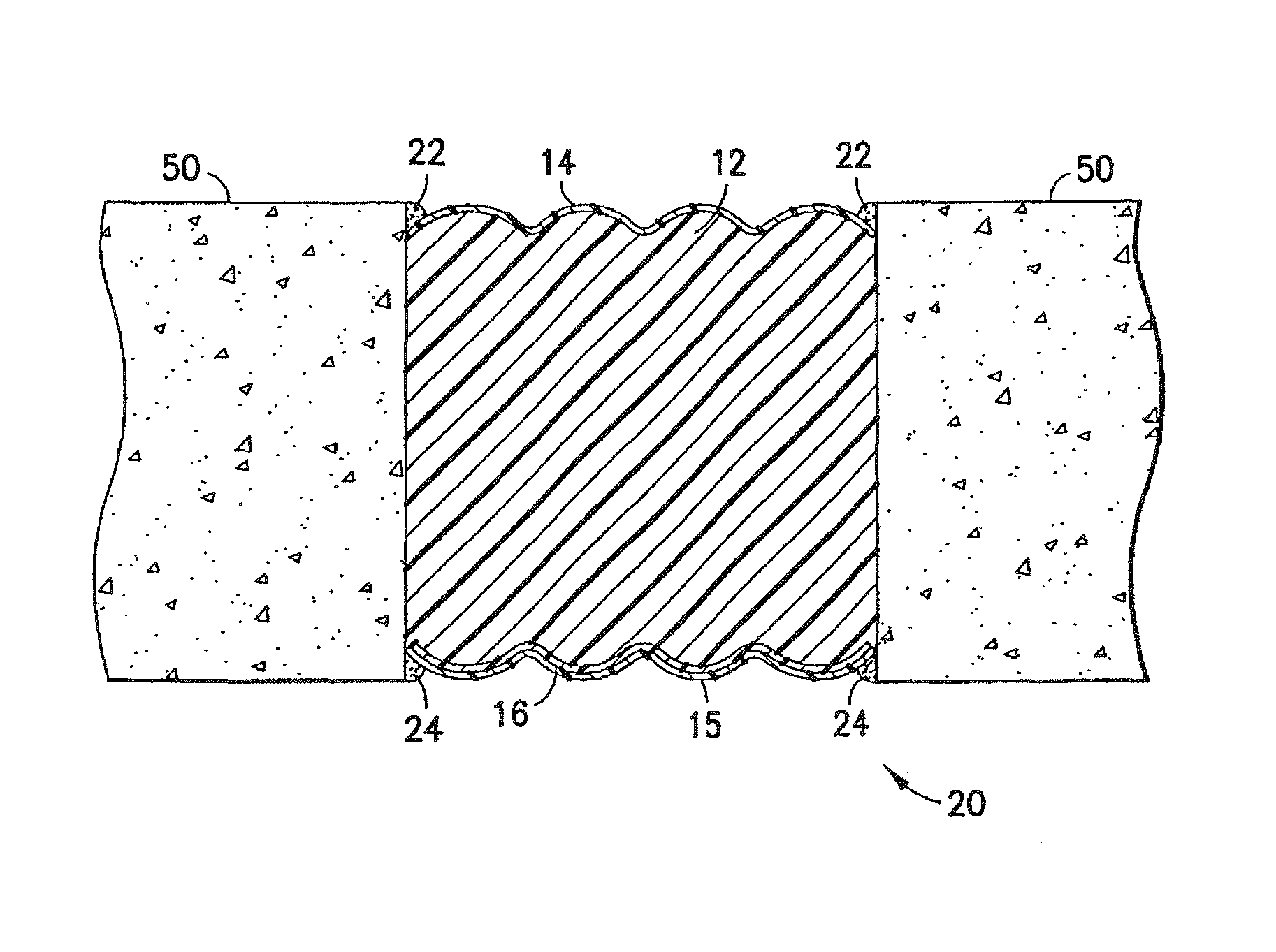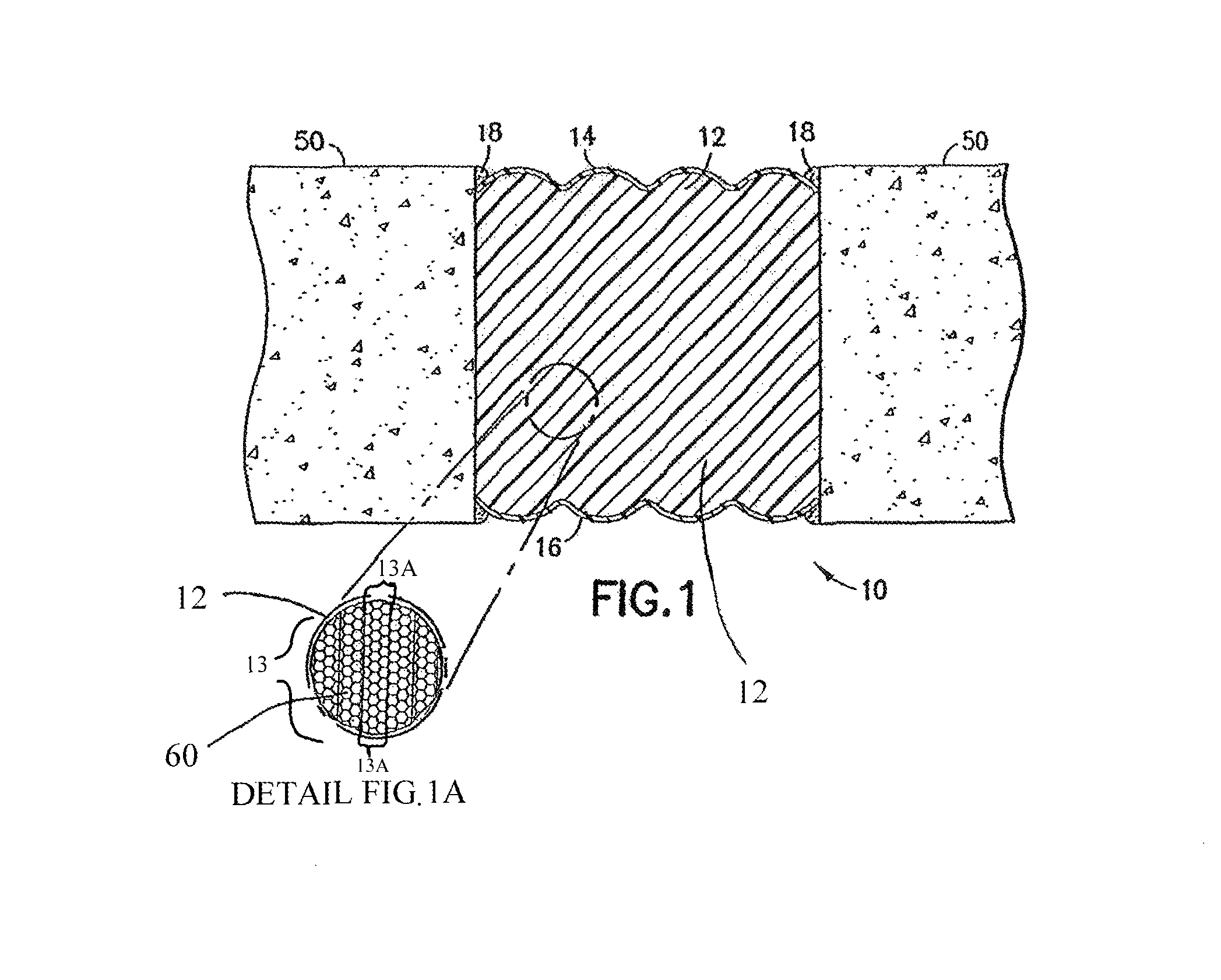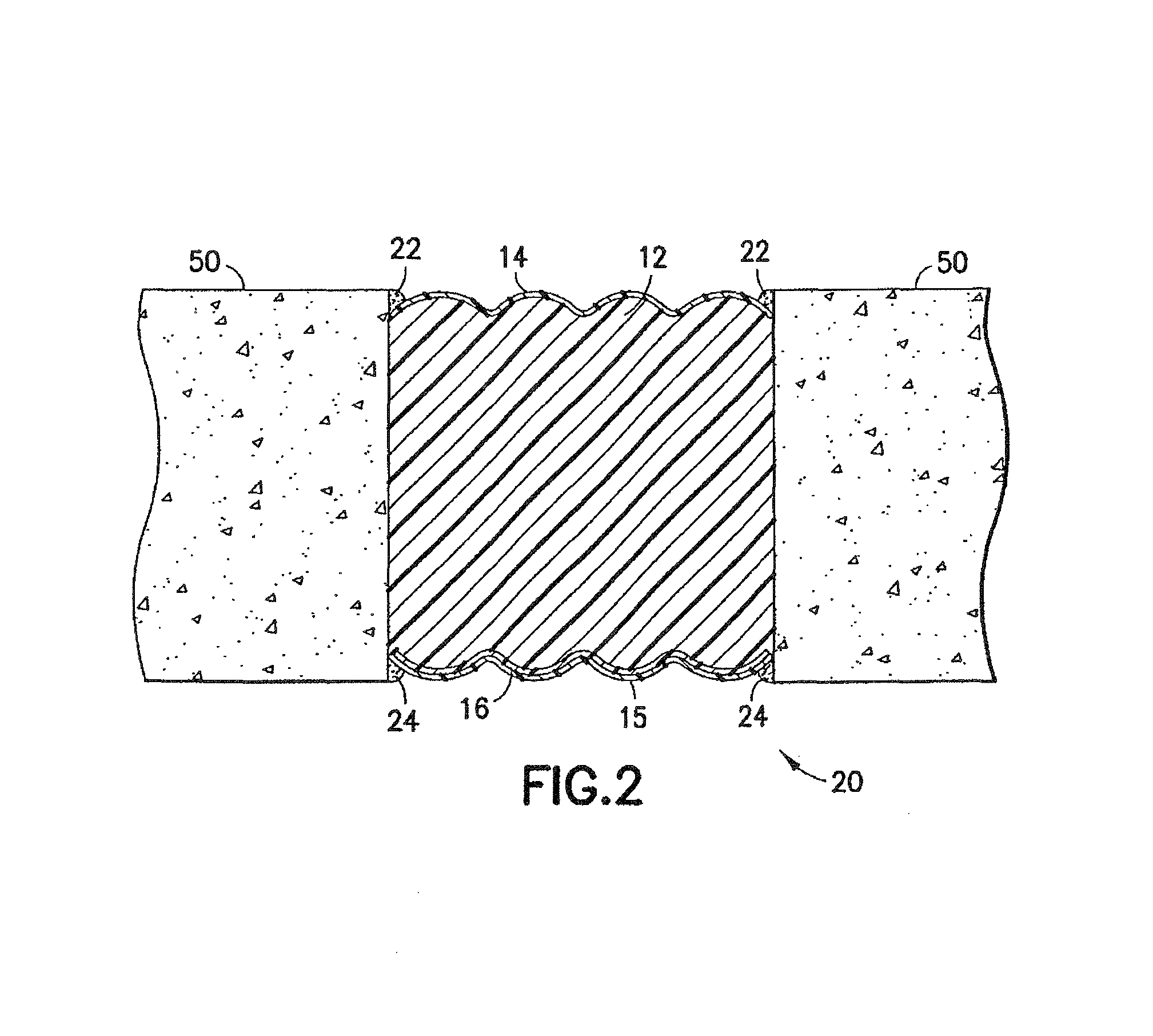Fire and water resistant expansion joint system
a technology of expansion joint and expansion joint, which is applied in the field of expansion joint system, can solve the problems of subversion of fire resistance elements, deficiency of building joint system with respect to fire resistance, and pedestrian traffic in the interior horizontal joints, and achieve the effect of maintaining both fire and water resistance characteristics
- Summary
- Abstract
- Description
- Claims
- Application Information
AI Technical Summary
Benefits of technology
Problems solved by technology
Method used
Image
Examples
Embodiment Construction
[0023]The expansion joint system described is best understood by referring to the attached drawings. The expansion joint system as described herein is shown as being installed between concrete substrates. The present invention is not limited in this regard, however, as the expansion joint system may be installed between substrates or surfaces other than concrete. Materials for such substrates or surfaces include, but are not limited to, glass, asphalt, stone (granite, marble, etc.), metal, and the like.
[0024]Referring to FIG. 1, one embodiment of an expansion joint system is shown at 10 and is hereinafter referred to as “system 10.” In system 10, compressed laminations 13 of open celled polyurethane foam 12 (hereinafter referred to as “foam 12”) are infused with a fire retardant material 60 (as illustrated in Detail FIG. 1A) to form the defined expansion joint locatable between coplanar concrete substrates 50. As stated above, the present invention is not limited to the use of polyu...
PUM
| Property | Measurement | Unit |
|---|---|---|
| temperature | aaaaa | aaaaa |
| density | aaaaa | aaaaa |
| density | aaaaa | aaaaa |
Abstract
Description
Claims
Application Information
 Login to View More
Login to View More - R&D
- Intellectual Property
- Life Sciences
- Materials
- Tech Scout
- Unparalleled Data Quality
- Higher Quality Content
- 60% Fewer Hallucinations
Browse by: Latest US Patents, China's latest patents, Technical Efficacy Thesaurus, Application Domain, Technology Topic, Popular Technical Reports.
© 2025 PatSnap. All rights reserved.Legal|Privacy policy|Modern Slavery Act Transparency Statement|Sitemap|About US| Contact US: help@patsnap.com



